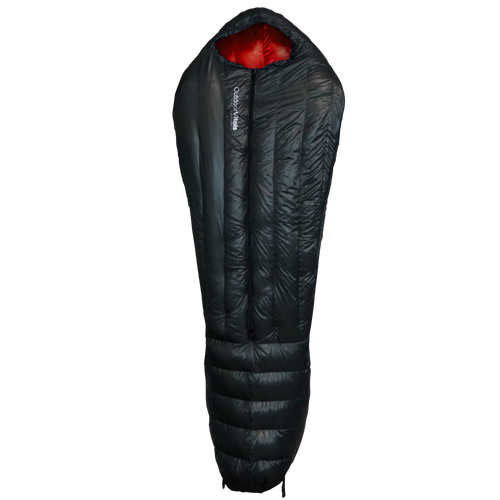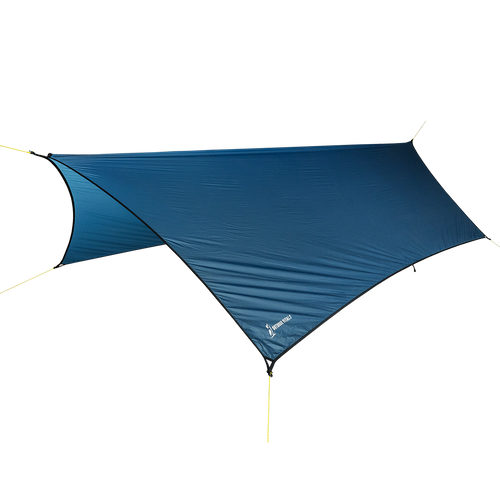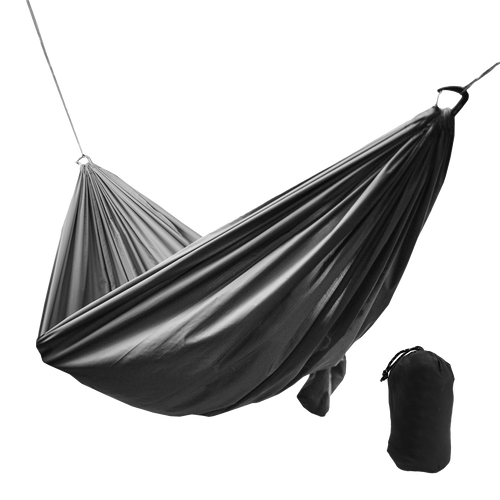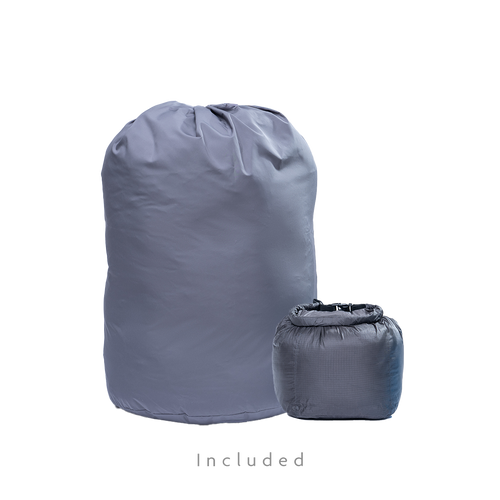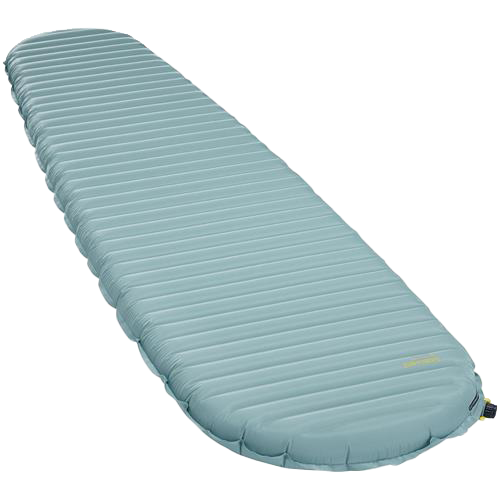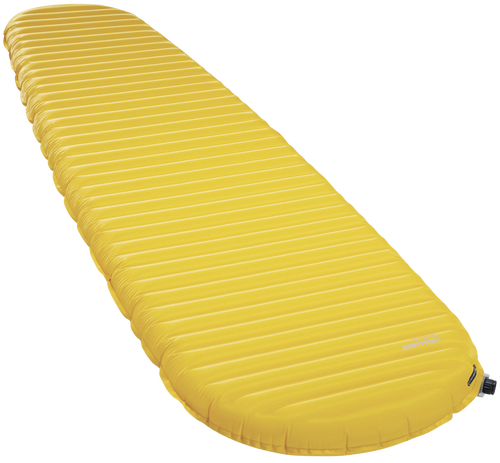Gas vs Alcohol Stoves
We are always on the lookout for how to save extra weight. As ultralight backpackers, the ounces even matter. So we recently did some experimenting. This article will take you along for the ride as we used an alcohol stove for the first time, how it went, what we liked and didn’t like, and how it compares to gas stoves like the MSR Pocket Rocket.
There are a few things that spurred our interest in alcohol stoves: a problem that often occurs with gas stoves is not knowing how much fuel is left in the canister. Another issue involves the weight of the gas canister, even when empty. We’d heard great things about the weight of alcohol set-ups, so we gave it a shot.
The First Time
Like I said, we had never used alcohol stoves before. But hey, if they save weight, we decided it was worth our time to explore. Tayson Whittaker, our founder, dropped about 40 dollars, and soon we had a new alcohol stove to check out in the office.

Without using the stove at all, it was impressive how light it felt while holding it in hand. Another perk was that the plastic bottle containing the alcohol was clear with little markings on the side, indicating how many ounces of fluid were in the bottle. That would be useful for being on the trail and rationing fuel for cooking time.
The first few tests were done in the office. We had an overnight backpacking trip planned where we would pit the alcohol stove against a gas stove, so we wanted to make sure we knew how to use it in order to have a fair comparison. Tayson spearheaded this whole effort, and got to play around with the stove.
After digging around on the internet, he found some tips and tricks (I’ll cover those later) and got a feel for how long it should take for the stove to get going, and how long it should take to boil water. Tayson didn’t seem to have any problem implementing those tips in his tests here at Outdoor Vitals headquarters.
But the field was another story…
In The Field
After our team had backpacked in to where we had decided to camp in a lovely slot canyon here in Southern Utah, we were getting excited to run our comparison. We got hammocks, tents, and sleeping areas set up, filmed for some of our ongoing project, and then it was getting to be time for dinner. And that meant we got to play with our stoves! Tayson actually said he felt like a kid with a new toy while messing around with the alcohol stove, whether back in the office or out in the field.
We got everything set up. We had two identical pots with as close to the same amount of water in them as we could measure. With a gas stove (pocket rockets are very common among backpackers, so we had one of those) on the left and the alcohol stove on the right, we were ready to start priming the alcohol stove. 
Since alcohol stoves typically take some time to prime, we decided Tayson should get it going first, and then light the pocket rocket as soon as possible afterwards. Alcohol stoves require about 1 oz of alcohol per meal. One tip Tayson had previously found to help prime the alcohol stove faster was to create a sort of small bowl out of tin foil underneath the stove. By putting a little bit of alcohol in the bowl and lighting it, the stove would heat up faster and not take so long to start jetting flames out of the tiny holes along the edge of the stove. (For more details or to see what this looks like, check out our video, we actually filmed the whole thing!)
Alcohol stoves require a windscreen, so once the stoves were both lit, Tayson put that around the pot and stove. We were hoping that this would not only keep the alcohol stove lit, but that it would also retain a little heat so the water would boil faster.
Well, the first try in the field was NOT what we anticipated. In just a couple minutes, the pocket rocket had the water at a rolling boil. The water on the alcohol stove was not even close to that. It actually took 10 minutes LONGER than the pocket rocket to boil water! This was a pretty big bummer.
It’s very possible that Tayson didn’t put enough alcohol in the stove to begin with. He also found condensation on the inside of the windscreen, so maybe it was actually suffocating the stove a little bit.
Needless to say we (and especially Tayson) were disappointed. So we retested after the stove had a chance to cool down. The second time around, Tayson was able to boil water in 6 minutes and 13 seconds, which was much more on track with the research we had done! I guess it just takes some practice sometimes to figure out an alcohol stove.
Gas Stoves vs Alcohol Stoves
So which stove is the best for ultralight backpacking? On the second try, the alcohol stove boiled water in about 6 minutes, while our pocket rocket boiled the same amount of water in 2. The big question now is if that 4 minute difference is worth it.
Let’s jump into some weights:
Pocket Rocket:
- Stove: 2.6 oz
- Case: 0.9 oz
- Empty Canister: 4 oz
- Total: 7.5 oz
Alcohol Stove:
- Stove: 1 oz
- Windscreen: 0.5 oz
- Total: 1.5 oz
-The weight of fuel for both of these stoves depends on the size of canister of amount of ounces of alcohol. For a canister weighing 7.5 oz while full, you can probably make it last for about 7 days. For 7 days worth of alcohol, it will weigh 10 oz in fuel alone.
7 Day Trip
As you can see, there is a similar weight between the two setups for a 7 day trip, but an advantage that an alcohol stove has is that it will weigh significantly less by the end of the trip because about 10 oz of fuel will be used up. For a gas stove, the canister will still weigh 4 oz when empty.
2 Day Trip
For shorter backpacking trips, the alcohol setup starts out lighter, and ends much lighter as well. If you don’t mind waiting an extra 4 minutes for your water to boil and want to save some ounces of weight in your pack, that’s something to consider.
Other Pros and Cons
Did you know you can actually make an alcohol stove for free? It’s called a penny stove. They can be made out of tin or aluminum cans, just search penny stoves DIY and you’ll have hundreds of ideas come up on how to make one. You can also make a windscreen for free out of tin foil. Then all you’ll have left to buy is the fuel, which isn’t really that pricey.
Like I mentioned before, the stove Tayson bought was about 40 dollars. It is made out of titanium, and so is the windscreen. The alcohol bottle came with it and holds 8 oz of fluid.
Really it seems like most of what we have to say about alcohol stoves is positive. They are affordable and lightweight. The biggest issue with using one of these is that it has more of a learning curve than a gas stove to be able to do it right, apparently.
Recommended Stoves
Since this little test, we've tried out a number of different stoves for backpacking - both canister style & alcohol fueled. There are a couple worth considering (though they are not by any means the only worthwhile stoves out there) as you are gearing up for your next backpacking trip!
TOAKS makes a really nice titanium alcohol stove called the Siphon. So far, it's been one of our favorites! It heats up water quite a bit more quickly than the Vargo stove Tayson used in the test we described above.
One of the best things about the TOAKS Siphon stove is that it weighs very little (0.7 oz) and works very efficiently.
As far as canister style stoves go, we've found that Katadyn's Optimus Crux Lite is a great option, especially if you're not wanting to go with any of MSR's stoves.
The Crux Lite weighs just 2.5 oz (72 g) and can heat up a liter of water in just 3 minutes (depending on climate & altitude.)
Since Outdoor Vitals isn't really planning on making our own backpacking stove anytime soon, we decided to make them more accessible to our Live Ultralight Members! As a member, you can get 10% off these stoves PLUS rebates back in the form of store credit.
Basically you can get some of the best prices on the internet on these stoves as a Live Ultralight Member.
Conclusion
There isn’t a “one stove beats all” situation here. For us, what it comes down to is finding out what personal preferences and needs are, and then choosing a stove setup that best matches those needs and preferences. The gas stove will always win when we’re talking about time. The alcohol stove wins when it comes to weight and cost. They are both amazing tools to help us get outside and enjoy the outdoors. Keep living ultralight!
*Check out our video and watch as Tayson shows how to set up and use an alcohol stove, how it works, and more about our experience in the field!
9 comments
One advantage to alcohol stoves I never see mentioned is that it can serve multiple purposes, which to me is the same as saving weight. Alcohol can be used to disinfect wounds, and if you carry high proof ethyl (like Everclear) instead of isopropyl, you can drink it for a nice evening cocktail or to relieve pain (ethyl has a slightly higher BTU than isopropyl too).
The biggest advantage I found to using alcohol stoves is the availability the cheap price of the fuel. Personally I like using Heet in the yellow bottle because it is cheap, performs well and can be found anywhere car stuff is sold. But rubbing alcohol is also cheap and easy to find at any pharmacy or grocery store. You can’t beat alcohol stoves if you’re on a tight budget.
You missed a big point of performance. I’ve used both types and alcohol. At 9000ft and about 32F, I found it very difficult to light. I had to hold a lighter under the alcohol stove to get the alcohol warm enough that it would light. This is because it is the vapor layer above the alcohol is what lights, not the alcohol itself. I live in CO where a lot of my hiking is above 8000ft
I use both alcohol stoves and a Toaks Titanium small wood burning stove…with the wood burning stove I carry no fuel and pick up a few Twigs just before I start cooking…I do freezer bag cooking and just boil water…
Wannabe backpacker here. I would also consider that while the gas can only be used for fire, alcohol is also a powerful antibacterial and can be even more of a weight saving if you can double it for your med pack.
I use both alcohol and gas stoves.
In my experience, gas is not only easier to use, but can be lighter because the fuel is more than twice as efficient by weight.
Modern stoves are also much lighter than the Pocket Rocket you used (eg, the BRS-3000T is only 28g / 1 oz).
My favourite alcohol stove is an eCHS. Look it up on Youtube to see Tetkoba’s many videos on these quite efficient little stoves.
One advantage of an alcohol stove is fuel availability. I recently completed a 21 day bikepacking trip through rural Idaho and found it impossible to find butane canisters so we had to resort to Sterno for warm coffee and boiling was out of the question. An alcohol stove would have worked well here as rubbing alcohol, HEET, or even Everclear were always available in small towns and gas stations.
one issue with alcohol stoves that needs to be considered is if you are in an area with a fire ban alcohol stoves are not allowed as there is no valve to shut down the flame.
Reading the article, I smiled as I had the exact opposite experience of trying out a gas stove for a long hike. I cremated everything to a crisp! I’m not an ultralight hiker, for the record; but at the same time, I don’t want to be carrying the kitchen sink on my back, either.
I think you addressed the salient point though: there is a learning curve to both mediums. I like the silence of the alcohol stove and the simplicity. I use a Trangia Mini.
In deepest winter and in California I use a gas stove for both speed, convenience and obeying the law. Setting correct expectations for yourself with either, is key.
I also think it comes down to a personal preference. Gas is perhaps, perceived for the young, alcohol is for the ‘more mature’ crowd ;). Now I’ve tried both, I know the strengths and weaknesses and can now use them for their merits.
Anyway, many thanks for the article.
Regards,
Lawrence


